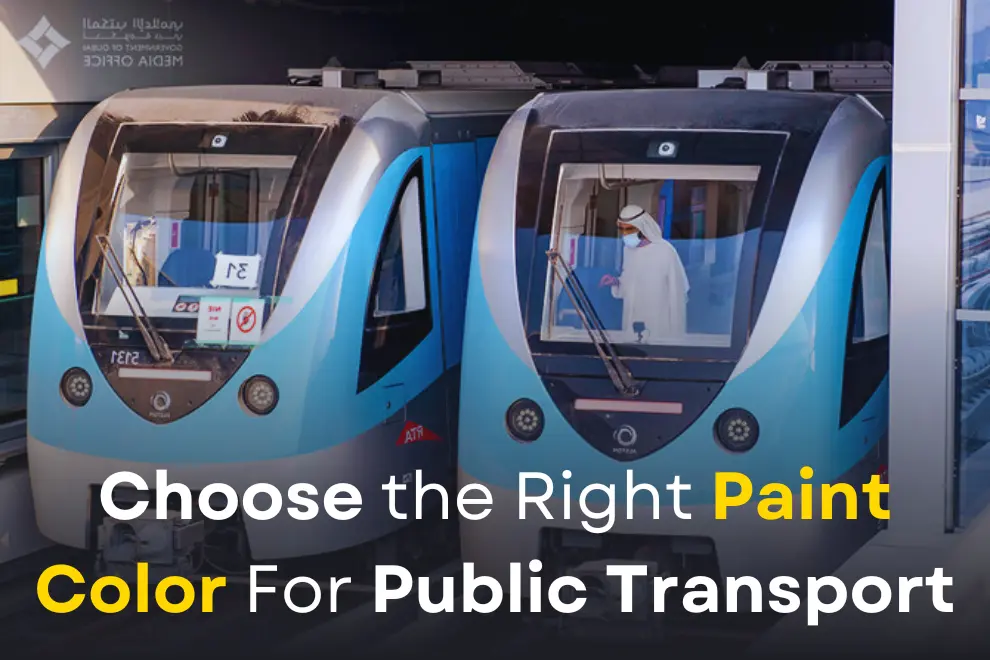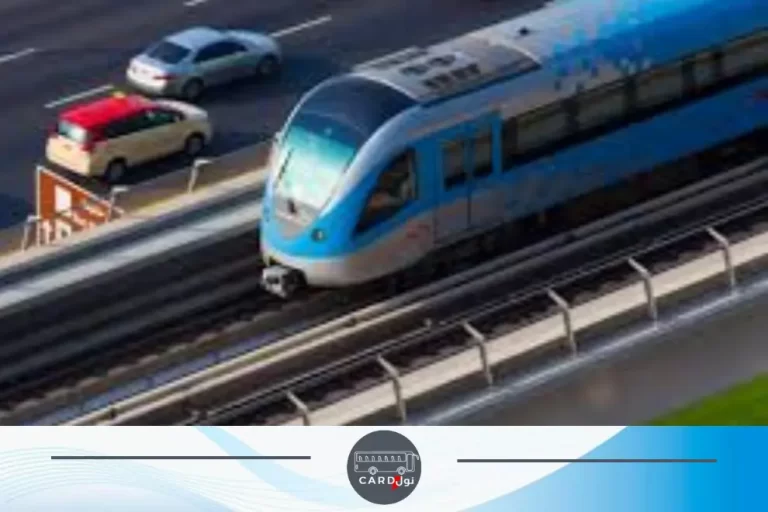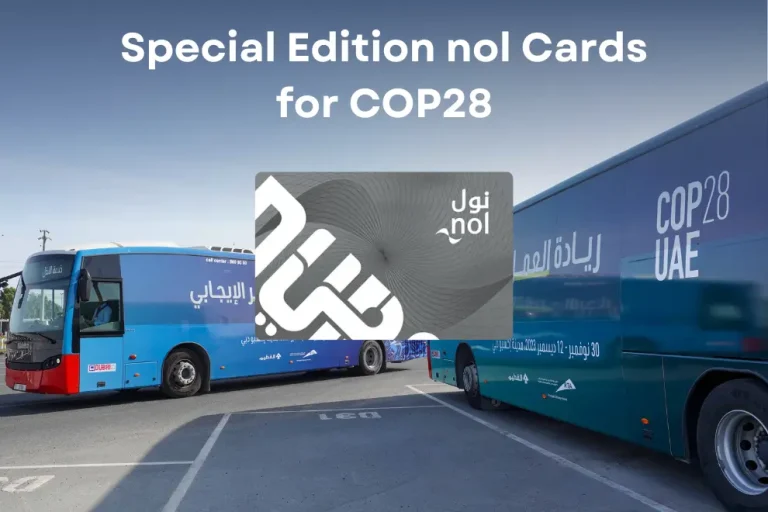What Are the Considerations When Choosing Paint Colors for Public Transport?

Choosing the right paint colors for public transport is crucial. It’s not just about aesthetics; it’s about creating an enjoyable and safe experience for passengers. From color psychology to branding and safety considerations, every decision matters. In this blog post, we’ll explore the key factors to consider when selecting paint colors for public transport. Hop on board and let’s dive in!
Importance of Color Psychology in Public Transport
Colors have a profound impact on our emotions and behavior, and public transport is no exception. Understanding color psychology is crucial when choosing paint colors for buses, trains, or trams.
Color psychology refers to the study of how colors influence human emotions and behavior. In the context of public transport, the right color choices can enhance passenger experiences and perceptions.
When passengers step into a vehicle, the color scheme can set the mood and atmosphere. Calming colors like blues and greens can create a sense of relaxation, while vibrant colors like yellows and oranges can evoke energy and excitement. By selecting the appropriate color palette, public transport operators can shape the overall ambiance and improve passenger satisfaction.
Different color schemes are used in public transport for specific effects. For instance, bright and contrasting colors are often used for safety features and signage, ensuring they catch passengers’ attention and communicate important information effectively.
In some cases, color choices can also represent a specific brand or identity. For example, a city’s public transport system may use colors that align with the city’s branding or cultural significance.
Painting services in Dubai can play a significant role in showcasing the city’s vibrant arts scene. Take, for instance, the public transport system in Dubai. By opting for a colorful and creative color scheme, they can effectively reflect the city’s artistic spirit. This not only creates a unique and memorable experience for passengers but also adds to the overall aesthetic appeal of the city.
Safety Considerations
When it comes to public transport, safety should always be a top priority. The choice of paint colors plays a crucial role in enhancing visibility and preventing accidents.
Public transport vehicles operate in various environments, including busy streets and dimly lit areas. Ensuring high visibility is essential to alert other drivers, pedestrians, and cyclists of the presence of buses, trains, or trams.
Certain colors, such as bright yellows, oranges, or whites, can significantly enhance visibility. These colors stand out against different backgrounds and increase the chances of being noticed, especially during low-light conditions or inclement weather.
To maintain safety standards, public transport operators must comply with specific regulations and standards regarding paint colors. These guidelines often define the permissible color schemes for different parts of vehicles, including safety features, signage, and emergency exits.
For instance, safety regulations may require the use of specific color combinations for doors or emergency exits to ensure easy identification and accessibility. By adhering to these standards, operators can ensure consistency and facilitate quick and efficient responses in case of emergencies.
Moreover, reflective materials and coatings can further enhance visibility, especially during nighttime. These materials reflect light, making vehicles more visible to other road users and improving overall safety.
Branding and Identity
Paint colors play a significant role in shaping the branding and identity of public transport companies.
Public transport companies understand the importance of standing out in a competitive market. One way they achieve this is through the strategic use of paint colors. The chosen color scheme becomes an essential element of their brand identity.
Color has a powerful impact on human perception and memory. By selecting distinct and memorable colors, public transport companies can create a lasting impression on passengers and the general public.
Successful branding through color choices can be seen in various public transport systems around the world. Take, for example, the iconic red double-decker buses in London. The vibrant red color instantly evokes images of the city and has become synonymous with its public transport system. This consistent use of color reinforces the brand identity and fosters a sense of familiarity for both locals and tourists.
Similarly, some cities opt for unique and unconventional color schemes to differentiate themselves and create a strong brand presence. For instance, a city known for its vibrant art scene might choose bold and artistic color combinations for its public transport vehicles. This choice not only reflects the city’s cultural identity but also creates a visually engaging experience for passengers.
Environmental Factors
When it comes to public transport, environmental factors play a crucial role in determining the comfort level of passengers and the overall sustainability of the system.
The choice of paint colors can significantly impact the temperature inside vehicles, especially in hot and sunny climates. Dark colors, such as black or deep blues, tend to absorb more heat from the sun, resulting in higher interior temperatures. On the other hand, lighter colors, such as whites or pastels, reflect more sunlight and help keep the interior cooler.
Energy efficiency is a key consideration in the design and operation of public transport systems. By selecting reflective or light-absorbing colors for the exterior surfaces, operators can minimize the need for excessive air conditioning or cooling systems. This not only reduces energy consumption but also contributes to cost savings and a more sustainable transport system.
When it comes to environmental impact, paint color choices can also play a role. Opting for eco-friendly and sustainable paint options can help minimize the release of harmful volatile organic compounds (VOCs) into the environment. Additionally, some paint manufacturers offer environmentally friendly coatings that are specifically designed to reflect more sunlight and reduce the urban heat island effect.
Maintenance and Durability
Regarding public transport, maintenance, and durability are crucial factors to consider.
Public transport vehicles endure daily wear and tear, exposure to harsh weather conditions, and frequent cleaning. Therefore, the choice of paint plays a vital role in maintaining the vehicles’ appearance and protecting them from damage.
Selecting paint colors that are resistant to wear, fading, and damage is crucial for ensuring the longevity of the vehicle’s exterior. High-quality paints formulated with durable pigments and protective coatings can withstand the rigors of regular use and maintain their vibrant appearance over time.
To ensure durability, it is important to consider factors such as UV resistance, scratch resistance, and chemical resistance when selecting paint colors. UV-resistant paints help prevent color fading and maintain the vehicles’ aesthetic appeal, even after prolonged exposure to sunlight. Scratch-resistant paints can withstand minor abrasions from everyday use, reducing the need for frequent touch-ups. Chemical-resistant paints are essential to protect vehicles from damage caused by cleaning agents and environmental pollutants.
Investing in long-lasting paint choices might entail a higher upfront cost, but it can be cost-effective in the long run. By opting for durable paints, public transport operators can reduce the frequency of repainting and touch-ups, saving both time and money on maintenance.
Conclusion
Choosing paint colors for public transport involves considering several important factors. Each aspect plays a role in creating a comfortable and sustainable transportation system, from temperature control and energy efficiency to durability and maintenance. By making informed color choices, operators can prioritize passenger comfort, reduce environmental impact, and ensure long-lasting appeal for their vehicles.






